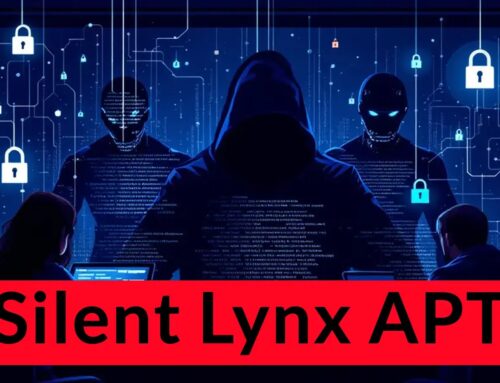
Splunk Release Guide for Defenders to Detect Suspicious Activity Before ESXi Ransomware Attack
The proliferation of virtualized infrastructure has undeniably revolutionized IT operations, offering unparalleled efficiency and scalability. However, this advancement comes with significant security implications, particularly when core components like VMware ESXi hypervisors become targets for sophisticated cyber threats. Recent widespread ransomware campaigns underscore a critical need for proactive detection and robust defense mechanisms. Organizations relying on ESXi environments face an escalating risk, with adversaries increasingly leveraging the centralized nature of these systems for maximum impact.
In response to this escalating threat landscape, a crucial resource has emerged: a comprehensive guide from Splunk, specifically tailored for cybersecurity defenders. This guide provides actionable intelligence and detection strategies to identify suspicious activity within ESXi infrastructure before a full-blown ransomware attack can cripple operations. Understanding and implementing the recommendations within this guide is not just advisable; it is imperative for maintaining enterprise resilience.
The Escalating Threat to VMware ESXi Environments
VMware ESXi, as a bare-metal hypervisor, forms the foundation of many modern data centers. Its widespread adoption, however, also makes it an attractive target for threat actors. A successful compromise of an ESXi host can lead to the encryption or destruction of multiple virtual machines (VMs) simultaneously, causing catastrophic data loss and prolonged operational downtime. Attackers frequently exploit vulnerabilities or misconfigurations to gain initial access, then move laterally to target the hypervisor directly.
Recent high-profile attacks, such as those leveraging ransomware variants like ESXiArgs, have highlighted the severe consequences of inadequate monitoring and defense strategies. These incidents demonstrate a clear shift in attacker focus: from individual workstations or servers to critical infrastructure components that can inflict wider damage. Organizations that fail to detect early indicators of compromise within their virtualization layers are at a severe disadvantage.
Splunk’s Proactive Detection Framework
Splunk’s guide is designed to empower defenders with the necessary tools and knowledge to detect pre-ransomware activity. It emphasizes the importance of telemetry and behavioral analysis over reactive incident response. By correlating various data sources—including ESXi logs, vCenter Server logs, network traffic, and endpoint activity—security teams can construct a detailed picture of potential malicious behavior. The core principle revolves around identifying anomalies that deviate from normal operational patterns and warrant immediate investigation.
Key areas of focus within the guide include:
- Login Anomalies: Detecting unusual login attempts, brute-force attacks, or logins from unusual geographical locations or times.
- Configuration Changes: Monitoring for unauthorized or suspicious changes to ESXi host configurations, network settings, or virtual machine parameters.
- File System Activity: Identifying unusual file creation, modification, or deletion, particularly concerning critical system files or VM virtual disk files (VMDKs).
- Process Monitoring: Alerting on the execution of processes known to be associated with ransomware encryption, data exfiltration, or persistence mechanisms.
- Network Anomalies: Tracing unusual network connections from ESXi hosts, including outbound connections to suspicious IP addresses or unexpected internal lateral movement.
Leveraging Splunk for ESXi Ransomware Defense
The guide provides specific Splunk Search Processing Language (SPL) queries and dashboard configurations to identify these indicators. For instance, monitoring for rapid increases in failed login attempts to ESXi hosts or vCenter servers can signal a brute-force attack. Similarly, detecting the creation of new user accounts or the modification of sensitive files outside of planned maintenance windows can indicate compromise. The ability to centralize and analyze logs from diverse sources is a significant advantage offered by the Splunk platform.
For example, a sudden creation of large numbers of new files with suspicious extensions or unexpected write activity to VMDKs could be an indicator of pre-ransomware staging or encryption. The guide encourages correlating such events with network traffic to identify potential command and control (C2) communications or data exfiltration attempts. Organizations should configure robust logging on all ESXi hosts and vCenter instances, ensuring these logs are forwarded to Splunk for real-time analysis.
Remediation Actions and Proactive Measures
Effective defense against ESXi ransomware requires a multi-layered approach that extends beyond detection. Once suspicious activity is identified, swift and decisive remediation is critical. Below are actionable steps organizations should implement:
- Isolate Affected Hosts/VMs Immediately: If an ESXi host or VM shows signs of compromise, disconnect it from the network to prevent further spread.
- Review and Revoke Unauthorized Access: Audit user accounts and revoke any suspicious or unauthorized credentials. Rotate all administrative passwords, especially for ESXi and vCenter.
- Patch and Update: Ensure all ESXi hosts, vCenter Servers, and associated components are fully patched to the latest versions. Be particularly vigilant about CVE-2021-21974, CVE-2021-21985, and CVE-2023-20867 which have been exploited in the past.
- Implement Least Privilege: Grant users and services only the minimum necessary permissions to perform their functions.
- Network Segmentation: Isolate ESXi management networks from general user networks. Implement strict firewall rules to limit inbound and outbound traffic.
- Regular Backups: Maintain immutable, off-site backups of all critical VMs and configurations, tested regularly for restorability.
- Multi-Factor Authentication (MFA): Enforce MFA for all administrative access to ESXi and vCenter.
- Security Analytics and Monitoring: Continuously monitor ESXi logs and network traffic using tools like Splunk for anomalies and indicators of compromise.
- Incident Response Plan: Develop and regularly test a comprehensive incident response plan specifically for ransomware attacks targeting virtualized infrastructure.
Essential Tools for ESXi Security
Beyond Splunk’s capabilities, several tools can augment your defense against ESXi-targeting ransomware. A layered security approach involves leveraging a combination of solutions for vulnerability management, network visibility, and data protection.
| Tool Name | Purpose | Link |
|---|---|---|
| VMware vRealize Log Insight | Centralized log management for VMware environments | https://www.vmware.com/products/vrealize-log-insight.html |
| Vulnerability Scanners (e.g., Nessus, Qualys) | Identifies unpatched vulnerabilities in ESXi and other infrastructure | https://www.tenable.com/products/nessus |
| Network Intrusion Detection/Prevention Systems (NIDS/NIPS) | Monitors network traffic for malicious activity and known attack signatures | (Vendor dependent, e.g., Snort, Suricata) |
| Endpoint Detection and Response (EDR) solutions | Monitors and responds to threats on individual virtual machines | (Vendor dependent, e.g., CrowdStrike, SentinelOne) |
| Backup and Recovery Solutions (e.g., Veeam, Rubrik) | Ensures rapid recovery from ransomware incidents | https://www.veeam.com/ |
Conclusion
The security of VMware ESXi environments is paramount for organizational continuity. The growing sophistication of ransomware attacks targeting virtualized infrastructure necessitates a proactive and data-driven defense strategy. Splunk’s release guide offers a vital framework, equipping cybersecurity teams with the insights and techniques required to detect the subtle indicators of compromise before they escalate into catastrophic ransomware events. By integrating robust logging, continuous monitoring, and prompt remediation, organizations can significantly enhance their resilience against these pervasive threats. Investing in these preventative measures is not merely a cost; it is an essential investment in operational stability and data integrity.





